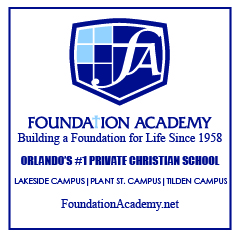Identifying Trichotillomania: A Hairy Subject
As a psychologist, I have often heard shocked mothers of teenage girls say, “I couldn’t believe it! I accidentally saw her head right after she got out of the shower. She was so good at hiding the bald spots.” This common statement occurs after a parent discovers that their child has Trichotillomania (“Trich”), a type of psychological condition that involves compulsive hair pulling. Concerned parents usually find themselves asking me the following series of questions: Have you ever seen anything like this before? Why does she get so angry when I try to talk to her about it? What do you think is causing it? What am I supposed to do when she’s telling me she doesn’t do it, and I can WATCH her do it?!
 Trichotillomania affects millions of men, women, and children who are convinced they are the only ones who do something so “weird” and they must be “crazy”. Sufferers, sometimes referred to as “Trichsters,” exist in all age ranges, but many are children who experience shame, embarrassment, hopelessness, and depression as a result of Trichotillomania. Some sufferers have worn wigs, bandanas, or false eyelashes for as long as they can remember. They have never ridden a roller coaster for fear their wig will fly off. Pool parties that are fun for everyone else are a nightmare for “trichsters”.
Trichotillomania affects millions of men, women, and children who are convinced they are the only ones who do something so “weird” and they must be “crazy”. Sufferers, sometimes referred to as “Trichsters,” exist in all age ranges, but many are children who experience shame, embarrassment, hopelessness, and depression as a result of Trichotillomania. Some sufferers have worn wigs, bandanas, or false eyelashes for as long as they can remember. They have never ridden a roller coaster for fear their wig will fly off. Pool parties that are fun for everyone else are a nightmare for “trichsters”.
If your child pulls out his or her hair, it is not necessarily Trichotillomania and could be a nervous habit. True Trich sufferers commonly do something with the hair once it has been pulled; such as gaze at it, run it across their cheeks or lips, put it in their mouth, examine the root, bite the root, or eat the hair. The behavior brings on a strong component of shame and embarrassment; thus children with Trich commonly hide the hair they pulled, become angry and refuse to say anything when asked about their thinning hair, and deny or minimize the problem.
There is a form of Trichotillomania, known as “Baby Trich,” that presents before the age of 5; yet, most cases appear in late childhood or early adolescence, and may initiate with a stressful event. However, Trich can also start after getting head lice or an infection, or for “no reason at all,” such as pulling a hair to examine under a microscope in science class, or pulling an eyelash to get a wish.
Naming the condition isn’t critical to treatment, but it is important to help parents understand the behavior as a neurobiological condition and, therefore, very difficult to stop. It keeps parents from saying counterproductive things, like “Just STOP IT!” or “If you wanted to stop, you would.” Instead, effective treatment approaches include Habit Reversal Therapy (HRT) and Cognitive Behavioral Therapy (CBT). Medication may be used to treat underlying conditions, but it has been found to be largely ineffective in treating the Trich itself.
Trichotillomania has much in common with Body-Focused Repetitive Disorders (BFRDs), such as Chronic Skin Picking (CSP) and nail biting. These disorders commonly occur in children and adults and often go away on their own. Parents should recognize that they have become a problem when the condition:
- Causes shame and embarrassment
- Ignites fighting and arguing within the family
- Results in medical problems (infections)
- Creates social problems (teasing or bullying)
- Causes academic problems
- Consumes a great deal of time – either performing the behavior or trying to conceal the results
Trichotillomania can cause a great deal of distress. While withholding the names of my patients and their family members, some have shared the following concerns:
- “I’ve been pulling out my eyebrow hair and eyelashes for 4 years now, and I didn’t think much of it until people actually noticed and said something about it. I’m embarrassed, but I still can’t fight the urge to continue to pull my hair.”
- “Trichotillomania has been a lifetime battle for my daughter. She has tried to stop on her own with limited to no success.”
- “Even if I can manage to stop for a little while, Trich comes back with a vengeance!”
- “She has cut/picked her skin out of frustration and worn wigs for two years. She has handcuffed herself to her bed at night to prevent herself from pulling/eating her hair.”
Warning signs of Trich include thinning hair, thinning lashes or brows, lots of time spent in the bathroom (utilizing tweezers/mirrors to aid pulling or cover-up of damage), piles of hair in the wastebasket or hidden under the bed, late nights spent on homework (due to time lost from pulling), and extreme defensive reaction or denial when asked about hair. If your daughter or son is exhibiting signs of Trichotillomania, please seek the help of a professional. Appropriate specialists should be skilled in Cognitive-Behavioral Therapy, Habit-Reversal, and familiar with alternative and complementary therapies that work for this condition. For additional resources, visit travisps.com, trich.org, or stoppulling.com.
Orlando Trich/Derm Support Group
- A support group for hair pullers, skin pickers, nail biters, and their loved ones
- Facebook.com/OrlandoFLTrichDermSupportGroup
- Meetings are held monthly on 1st and 3rd Saturdays at 1:30 pm, at the office of Dr. Mary Travis, 1950 Lee Road, Suite 213, Winter Park, FL 32789 / (407) 644-1522 / www.travisps.com






